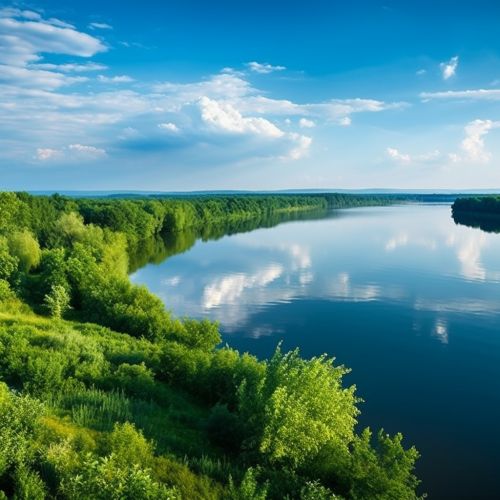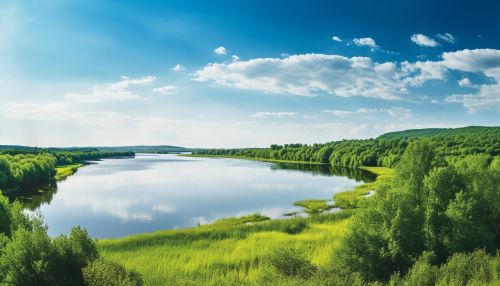Volga River
Geography
The Volga River is the longest river in Europe, and it's also the largest in terms of discharge and watershed. It flows through central Russia and into the Caspian Sea, and its basin covers a significant portion of the European section of Russia. The river has a length of 3,692 kilometers, making it one of the longest rivers in the world.


The Volga originates in the Valdai Hills, a highland region in the northwest of Russia. It then flows eastward across the Russian Plain, passing through a series of large lakes, including Lake Sterzh, Lake Vselug, Lake Peno, Lake Volgo, and Lake Seliger. From there, the river turns southeast, passing through the cities of Tver, Yaroslavl, Nizhny Novgorod, Kazan, Ulyanovsk, Samara, Saratov, and Volgograd before finally discharging into the Caspian Sea.
The Volga has a number of large tributaries, the most significant of which are the Kama, the Oka, the Vetluga, and the Sura rivers. The river's watershed is home to a large number of species of flora and fauna, making it a significant ecological region.
Hydrology
The Volga River has a complex hydrological system. Its flow varies greatly depending on the season, with the highest water levels typically observed in the spring and early summer due to the melting of snow in the river's upper reaches. The river's discharge is also influenced by the many reservoirs and hydroelectric power stations located along its course.
The Volga's drainage basin is vast, covering an area of about 1.35 million square kilometers. This basin includes a wide variety of landscapes, from the forested hills of the Valdai Hills to the arid steppes of the lower Volga. The river's basin is also home to a large number of lakes, swamps, and wetlands, which play a crucial role in the river's hydrological cycle.
History
The Volga River has played a central role in the history of Russia. It has served as a vital transportation route since ancient times, and many of Russia's largest and most important cities are located along its banks. The river has also been a source of inspiration for numerous works of Russian literature, music, and visual art.
The Volga region was inhabited by various tribes and peoples in ancient times, including the Scythians, the Sarmatians, and the Khazars. In the Middle Ages, the river served as a major trade route between the Varangians (Vikings) and the Islamic world, with the Volga trade route forming a crucial part of the larger network of trade routes known as the Silk Road.
In the modern era, the Volga has continued to play a crucial role in Russia's economic and social development. The construction of the Volga-Don Canal in the 20th century allowed for direct navigation between the Volga and the Don River, opening up new opportunities for trade and transportation.
Economy
The Volga River is a major economic asset for Russia. It serves as a crucial transportation route, with a large amount of cargo transported along the river each year. The river is also a significant source of hydroelectric power, with numerous power stations located along its course.
The Volga's basin is home to a large number of industries, including agriculture, fishing, forestry, and mining. The river's waters are also used for irrigation, drinking water, and industrial use. However, these activities have also led to significant environmental challenges, including pollution and habitat destruction.
Environmental Issues
The Volga River faces a number of environmental challenges. These include pollution from industrial and agricultural activities, habitat destruction due to dam construction and other human activities, and the introduction of invasive species. These issues have led to a decline in the river's biodiversity and have had negative impacts on the health of the river's ecosystem.
Efforts are being made to address these issues and to restore the health of the Volga River. These include initiatives to reduce pollution, to protect and restore habitats, and to manage the river's resources in a sustainable way.
